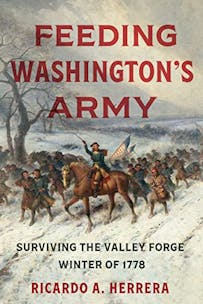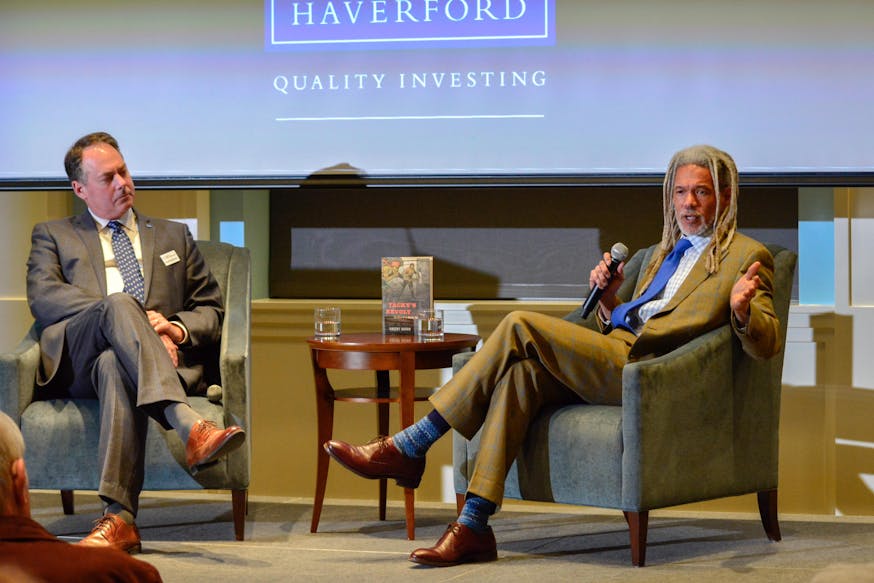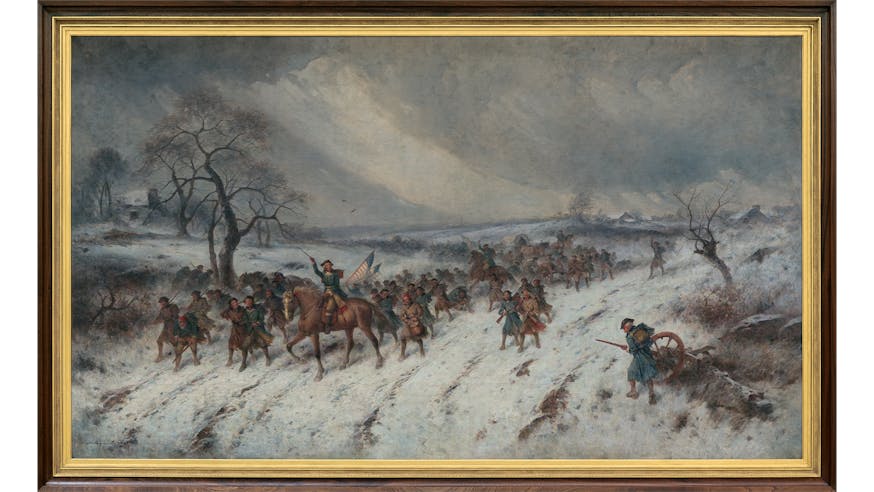Read the Revolution
Feeding Washington's Army
January 11, 2023
Purchase the book from The University of North Carolina Press.
What can the survival skills that General George Washington’s army learned while in winter camp at Valley Forge teach us about leadership, economics, and even food history today?
In Feeding Washington’s Army: Surviving the Valley Forge Winter of 1778, Dr. Ricardo A. Herrera brings to light the army’s herculean efforts to feed itself, support local and Continental governments, and challenge the British Army. Highlighting the missteps and triumphs of both Washington and his officers as well as ordinary soldiers, sailors, and militiamen, Herrera reveals how close the Continental Army came to succumbing to starvation as well as how strong and resourceful its soldiers and leaders needed to be to survive. As Herrera comments in the preface, “The story behind the army's efforts to sustain itself in February of 1778 is much larger and more important than the actual act. The bigger story is one of a maturing general, George Washington, and his officers and soldiers.”
Presenting Valley Forge as “an active post that hosted a combative field army, not a static quiescent garrison,” Herrera argues that the tactical decisions made to sustain the encampment were part of the larger military strategy now called the “Grand Forage of 1778.”
Excerpt
Small it may have been, but the Grand Forage of 1778 was great in its results. It contributed to the Continental Army's continued survival until the spring, the army's continued support of Continental and state authority, and its continued challenge to British authority. Moreover, the planning and execution intimated greater developments within the army's leadership, even as it struggled with a ramshackle logistical system that threatened the army's ruin on a regular basis.
Over fifteen hundred Continentals, militiamen, members of the commissariat and quartermaster general's offices, free and enslaved wagoneers, and others had foraged, driven, and transported the provisions and other supplies so vital to the survival of the main army encamped at Valley Forge. Foraging columns and purchasing agents had ranged across hundreds of square miles in southeast Pennsylvania, southern New Jersey, northern and central Delaware, and northeast Maryland in search of cattle, sheep, swine, wheat, flour, and more. The marching columns under Maj. Gen. Nathanael Greene and Brig. Gen. Anthony Wayne had skirmished with enemy forces in the process. They, and Capt. Henry Lee's light dragoons had encountered scores of civilians whose sympathies ran from active and enthusiastic support for the revolutionary regime to sullenness and open hostility to the cause of independence and overt loyalty to the crown. They had confronted people who simply wanted to be left at peace, the so-called disaffected who wanted nothing to do with the war. Throughout their foraging, Greene's, Wayne's, and Lee's soldiers had also come into close contact with the ethnic, religious, racial, and geographic diversity of the region and the complex military, political, and climatic conditions that all of those elements created as the foragers sought out the provisions and supplies so badly needed by the army.
The Grand Forage of 1778 was as much an act of desperation as it was a demonstration of George Washington's fortitude and strategic prescience. Washington faced a stark, unpromising, and uncompromising gamut of possibilities in February 1778. Without provisions, his best choice was dispersal somewhere into Pennsylvania's backcountry, beyond the reach of the British Army, and beyond its competing foragers. Feeding the army would become an easier task but retiring westward would also cede control of southeast Pennsylvania to the enemy and completely undercut any pretenses to an independent American government. Moreover, it raised the specter of emboldened Loyalists rushing to the king’s standard in defense of the crown.
Ricardo A. Herrera, Feeding Washington’s Army: Surviving the Valley Forge Winter of 1778 (The University of North Carolina Press, 2022), 159-160.
Sign Up!
Get biweekly Read the Revolution featured excerpts right to your inbox.
Tags
Learn More

Read the Revolution Speaker Series with Ricardo Herrera
January 26, 2023 from 6:30-8 p.m.
Read the Revolution Speaker Series

